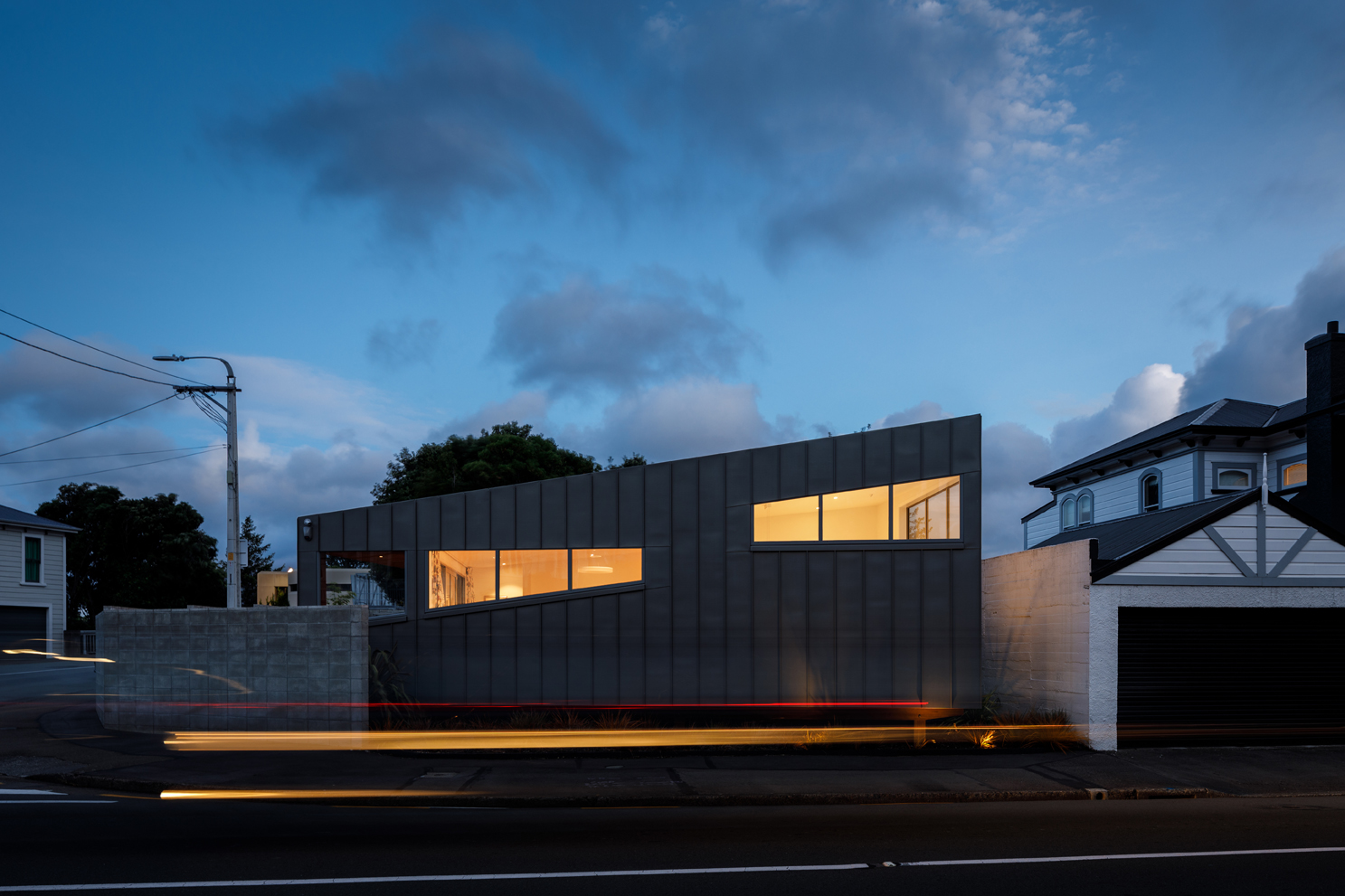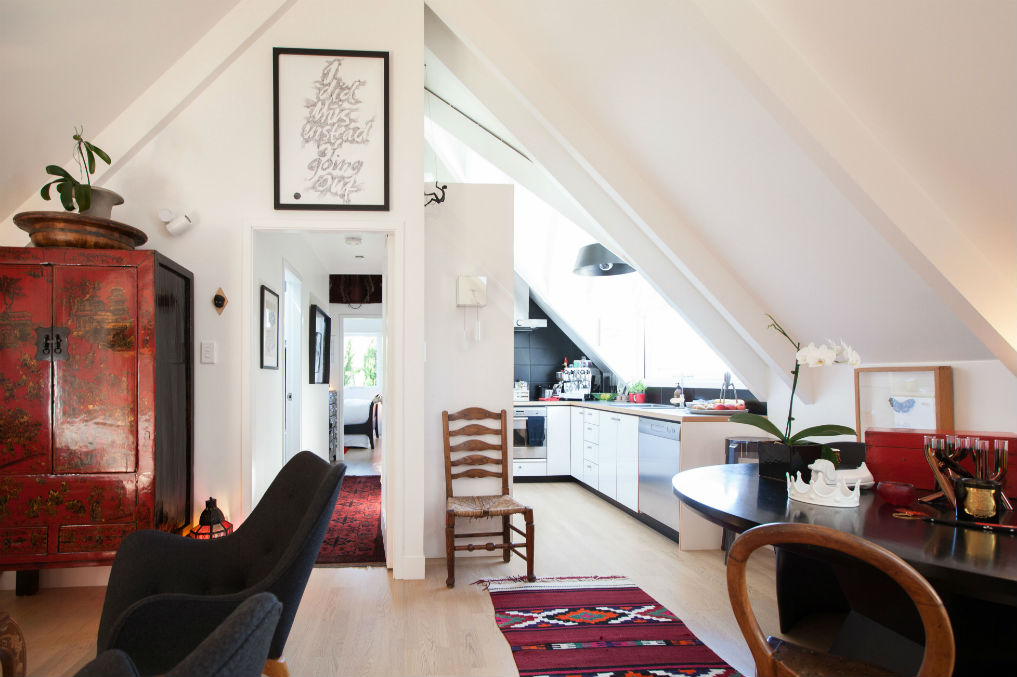At the foot of Maungatautari Mountain lies the pristine green of Lake Karapiro, and at its very edge, the lake retreat of sailing-enthusiast owners.
Quite fittingly, the low-slung building sits as if moored to the Waikato land. The brutalist roadside elevation, like an impressive sailing vessel, belies the light-filled spaces of its interior and views of the lake beyond.
Descending the slope from the road, the filigree work of sliding screens at the west end of
the building’s precast concrete face is the only peak of the lake to tempt a visitor. The detailed gates throw delicate shadows, a foil to the dramatic timber imprinted tilt-slab wall and vertical band-sawn cedar battening. For added drama at night, the low-slung cedar is backlit with LED.
The impressive entry essentially acts as a fortification – only a single low-slung window teases in the light, and an opening between the main façade and a parallel concrete wall allows visitors to slip in sideways to enter the “fort”. Privacy from the road, as well as a firm barrier against the prevailing northwest wind, led design of the roadside elevation, says Lee Turner of Turner Road Architecture, who worked in collaboration with colleagues Phillip Vaughan and Chris Wilson on the project. “It forms a private but striking view from the road,” he says. “We wanted the raw materials to tie in with the landscape, and while it’s a heavy piece of architecture, we wanted to keep the palette natural to tie in with the setting.”
On the building’s northern elevation exterior cladding reverts entirely to cedar. Turner was conscious the view from the lake should mean the building dissolves into the landscape, and it was the undulating contours of the original site that easily suggested form. Consequently, the hillside site needed only a small amount of retaining to cradle the long-line pre-cast tilt-slab design, which reaches its apex near the end of the slope’s higher side. Much like a boat with its sails folded down, the roofline fans low against the site’s contour, with the concrete slab running almost the entire length, bowing right down at the west end to create a cosy, sheltered poolside space.
The result of the external wall’s gentle wedge shape is a gallery hallway in the western wing with an Alice in Wonderland effect: the ceiling lowers as a visitor takes the journey from the living area down past bedrooms and media room to the sheltered outdoor area – the roofline remaining unbroken.
On the wall’s interior, a curious negative detail is caused by the rubber joins of the tilt-slabs. Turner says this is a happy accident of the material, and it fits in nicely with the high-spec detail of the build. But while the wall creates drama, it was also the biggest challenge. “You’ve got to be really accurate because you can’t change it once it’s done. Liaising with the tilt-slab company, builders and electricians – getting that concrete wall up was the nervous part – once it was up we were pretty happy.”
The master bedroom wing sits at the eastern end, with utilities at its rear (including a bespoke garage for custom sailboat-building) and the living area and kitchen in the main void. Due to the east to west design, every bedroom and both living areas enjoy lake views. Those views are not only important aesthetically; sustainable principles were key to the design. The large glass panes ensure a thermal advantage in winter. In contrast, over the summer timber and steel sunshades protect internal spaces.
The client will use the home to escape the “big smoke”, to enjoy the long-held dream of building a boat and as a place for children and grandchildren to gather. To this end a second outdoor living space was designed to flow from the main living area. Louvred panels were installed above to control the light, and positioning on the northern elevation means that barely a breath of wind is felt, even on a blustery day. A lawn was built up in front of this outdoor space so that grandchildren can play outside, well within view.
The clients will no doubt enjoy the sheltered outdoor option, and when the sailboat project is finally complete and the wind’s up on the lake, the family can watch from their lakeside fortress as the boat glides across the water below.
Photography by Amanda Aitken






.jpg)


